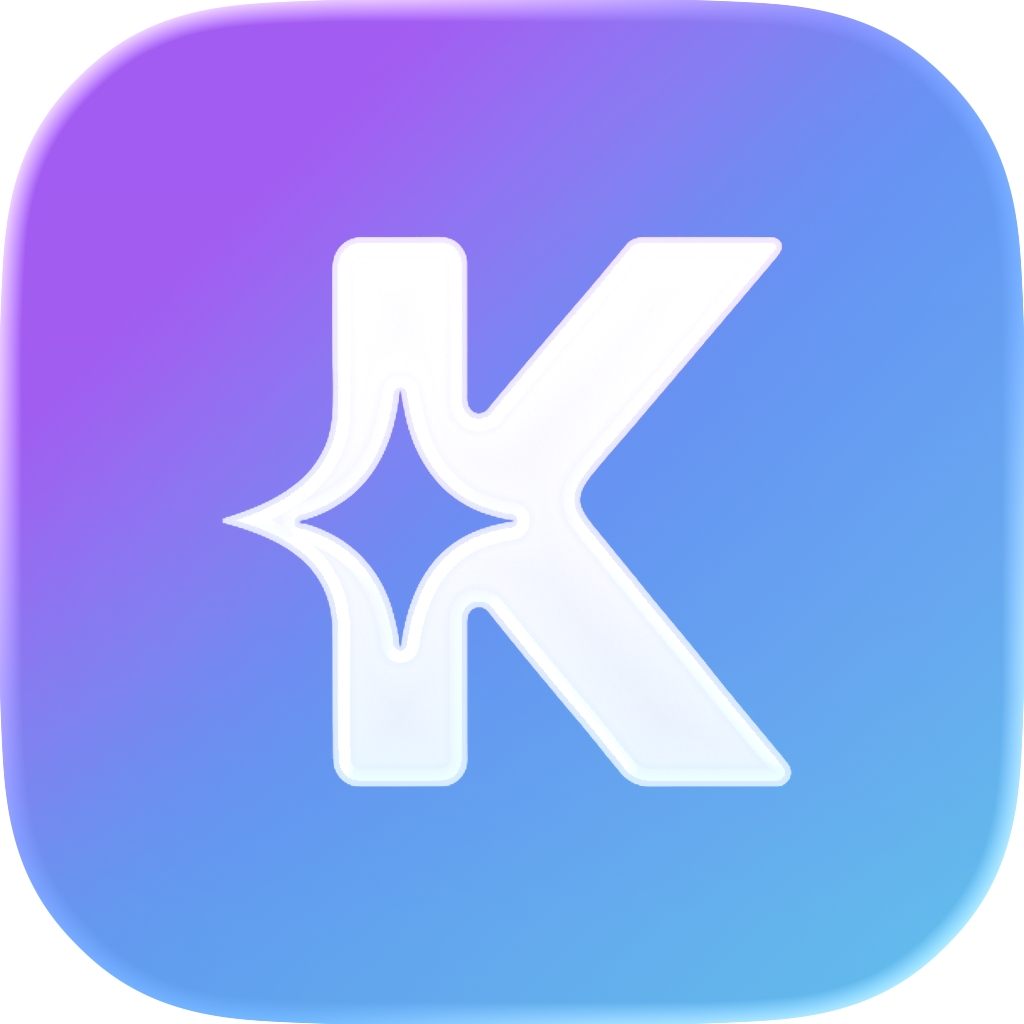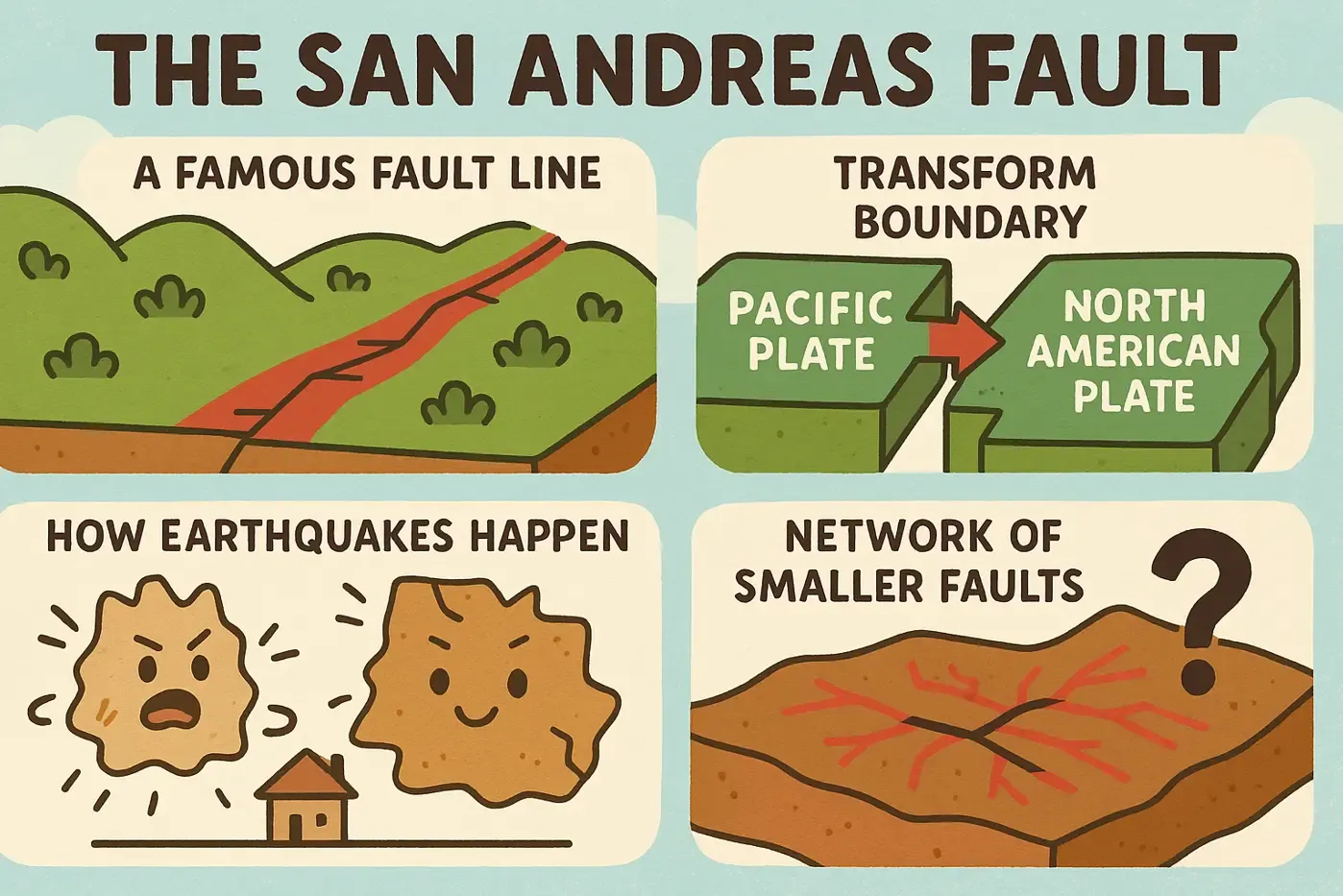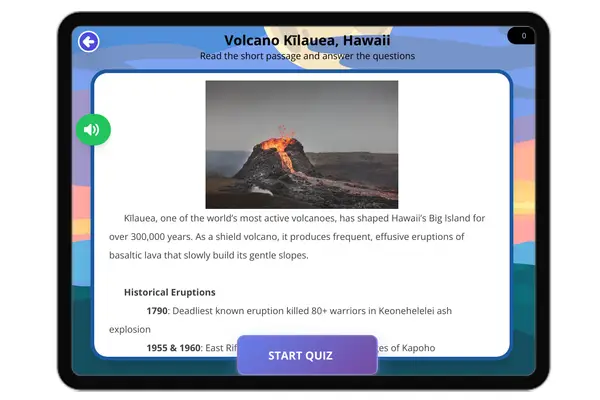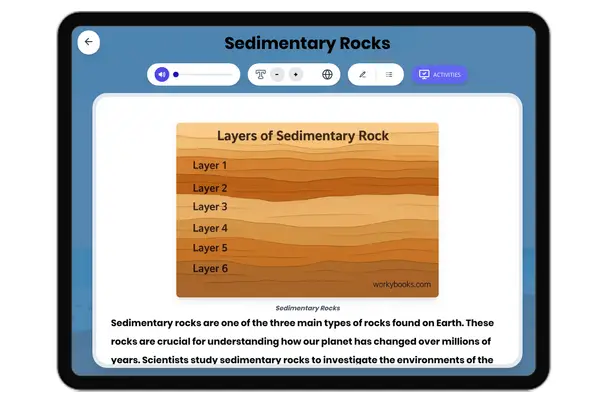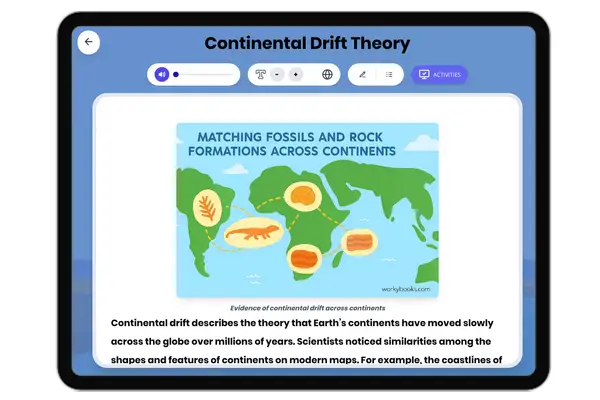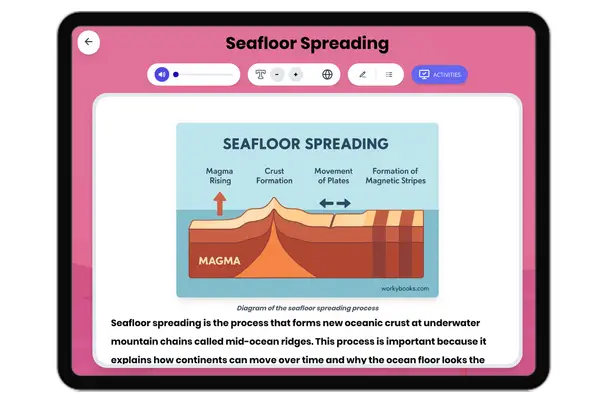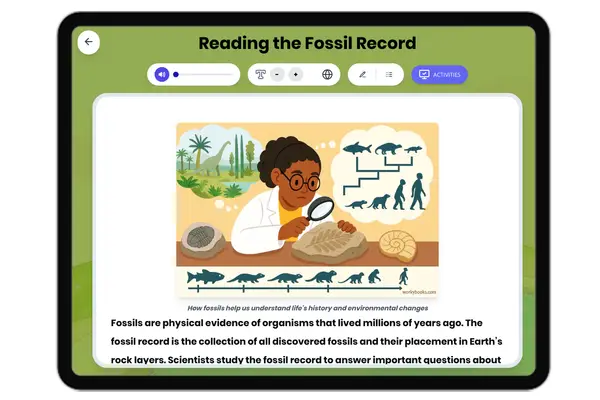What Type of Plate Boundary Is the San Andreas Fault? — Reading Comprehension
Grades
- 5
- 6
- 7
- 8
Standards
- MS-ESS2-3
- RI.6.1
- RI.7.4
- RI.8.2
PRINT+DIGITAL RESOURCE
This learning resource is available in interactive and printable formats. The interactive worksheet can be played online and assigned to students. The Printable PDF version can be downloaded and printed for completion by hand.
About This Reader
This explanatory passage examines the San Andreas Fault as a transform plate boundary where the Pacific and North American plates slide horizontally. It explains earthquake formation through stress buildup and sudden plate movements, referencing the 1906 San Francisco earthquake. The text clarifies that the fault isn't a single crack but a network of smaller faults, with varying movement patterns. Aligns with NGSS MS-ESS2-3 (plate tectonics) and CCSS RI.6.7 (visual/technical information). The content helps students understand fault monitoring for earthquake prediction and connects to real-world seismic safety concerns in California, making plate tectonics tangible through a famous geological feature.
Perfect For:
👩🏫 Teachers
- • Reading comprehension practice
- • Auto-graded assessments
- • Literacy skill development
👨👩👧👦 Parents
- • Reading practice at home
- • Comprehension improvement
- • Educational reading time
🏠 Homeschoolers
- • Reading curriculum support
- • Independent reading practice
- • Progress monitoring
Reading Features:
📖
Reading Passage
Engaging fiction or nonfiction text
❓
Comprehension Quiz
Auto-graded questions
📊
Instant Feedback
Immediate results and scoring
📄
Printable Version
Download for offline reading
🔊
Read Aloud
Voice-over with word highlighting
